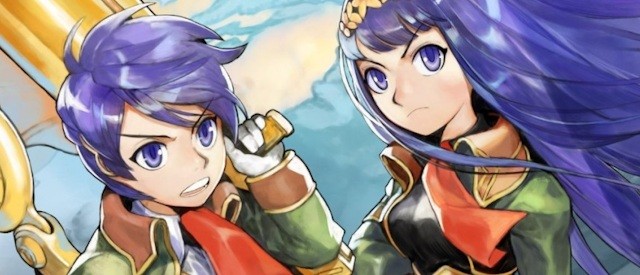Welcome to the latest edition of Co-Op International. Here I discuss co-op games that have not been released in the US. This will include current gen games as well as classics. We hope you’ll enjoy learning more about Japanese games – please let us know in the comments section!
Last month’s Co-Op International column focused on Dodonpachi Resurrection, a popular shoot-em-up among import enthusiasts. This time we look at another vertically-scrolling bullet hell shmup from CAVE: Espgaluda II Black Label for Xbox 360. While the Espgaluda series is lesser known than Dodonpachi (and less populated with sequels), fans of the genre will find just as much to love here.
Espgaluda II’s setting and story feature an appealing blend of science fiction and fantasy. For years, an alchemist has experimented on young people with ESP powers, enhancing their abilities and giving them artificial wings for flight. These individuals are known as Galudas. Three Galudas: a brother and sister pair and a 12 year old girl escape from the program, wanting only to return to their normal lives. To maintain their freedom, they’ll have to fend off their military pursuers and defeat the royal family’s own Galudas. It’s a setup fit for an anime, though like Dodonpachi Resurrection, the story is told pretty much entirely during the ending rather than introductory or mid-game cinemas.
Vertically scrolling shoot-em-ups tend to fill only tiny portions of the screen with actual gameplay, unless played in tate mode (turning the screen on its side). The active screen area in Espgaluda II feels smaller than usual - the 2005 arcade original ran at a fairly low resolution, and the graphics haven't been updated. That’s not so bad if you’re sitting close to the screen, as it reduces the need for detecting bullets with your peripheral vision. I wouldn’t want to sit too far away, though.
Tiny window or not, Espgaluda II actually manages to look more impressive to my eyes than shmups like Ikaruga thanks to genuinely strong pixel art and background design. Locales include Victorian-looking towns, castles, and even an alchemic lab where Galudas are cloned. Enemies include steampunk tanks, dragon-like flying machines, and even tiny soldiers on foot who leave little blood splatters when killed. Though the game is two-dimensional, levels often have a feeling of depth to them thanks to clever camera tricks. The world is surprisingly detailed and well-realized for a game whose genre usually prioritizes cramming ridiculous numbers of bullets on-screen over depicting memorable scenery.
